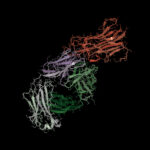The “holy grail” in OA remains identifying the chemical and imaging biomarkers that can predict rapid disease progression, Dr. Abramson said. “We have to look at the etiologies, the phenotypes of what, at the earliest stages, may be driving a person’s knee OA to understand that, if it’s being driven by different etiologies, then the early markers and targets may be different. In each of these areas—whether it’s aging, bone, inflammation, or obesity—there may be early, different driving features,” he said.
RA Therapies
The pace of progression for new RA therapies “continues to be amazing,” said Clifton B. Bingham III, associate professor of medicine and director of the Johns Hopkins University Arthritis Center in Baltimore. He said that trials investigating whether medications can be tapered or withdrawn for certain patients have promising implications.
One trial, the PRESERVE study, was the first to look at whether low disease activity could be sustained with reduced doses or withdrawal of etanercept in patients who had moderately active disease. Researchers found that a reduced or conventional dose of the drug along with methotrexate was more effective at maintaining low disease activity than methotrexate alone after etanercept was withdrawn.3 “These data support this as a reasonable strategy in some patients, but it is important that they are maintained in a low–disease activity state before you begin to [taper or withdraw medication],” Dr. Bingham said.
Head-to-head comparison studies of a number of RA therapies have also been published in the past year. One of these compared the efficacy of subcutaneous abatacept versus subcutaneous adalimumab in patients with active RA who were naive to treatment with biologic agents and had had an inadequate response to methotrexate.4 Another study, ADACTA, compared tocilizumab with adalimumab.5 A novel oral Janus kinase inhibitor, tofacitinib, has been compared with adalimumab and placebo for its efficacy in patients with RA who also receive background methotrexate.6 Trials of unapproved, investigational agents are continuing, Dr. Bingham reported.
“There are a lot of therapies out there for patients who are refractory. Our challenge will be how long do we treat with one thing before we move to another, and whether there is anything we can do to predict who will respond to one medication versus another,” he said. “At this point, with all the genomics and everything else we are doing that may not be ready for prime time, it is encouraging that we may be able to find some biomarkers to identify patients who may be appropriate for certain types of therapies.”
Additional Therapies Needed for Lupus
Even though a variety of new medication choices are not yet available for SLE, strides have been made over the past 15 years, according to Elena M. Massarotti, MD, associate professor of medicine at Harvard Medical School and Brigham and Women’s Hospital in Boston. She noted that challenges remain in lupus, including early diagnosis and disease monitoring. “Most of the current treatment regimens … require corticosteroids, which remain a major cause of morbidity in patients with lupus, so regimens that will mitigate the use of corticosteroids should be paramount.”

